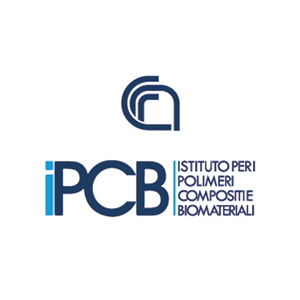Vanzanella Emanuele
Technical collaborator – SS Napoli/Portici
Valente teodoro
Former Director IPCB – CNR
teodoro.valente(-at-)cnr.it
SHORT CV
Graduated in Mechanical Engineering (1989), master’s in business administration at LUISS University of Rome (1993).
Former consultant of Snamprogetti Spa (1990-1992), visiting Scientist at the Osaka National Research Institute (1997), National seconded expert by the MUR at the European Commission for European Scientific and Technological Cooperation Actions in the Materials Area (COST, 1996-1997), first Director and then President of the National Interuniversity Consortium on Materials Science and Technology (until 2020). He has been, from 2010 to 2019, Director of the Department of Chemical Materials Environmental Engineering at Rome University “La Sapienza”; Vice President of the public-private Consortium Sapienza Innovation; member of the Sapienza Patent and Spin-off Committee; Vice Rector for Research, Innovation and Technology Transfer of Sapienza University of Rome (2016/2020). He has been Vice-President and member of the Board of Directors of Grint Scarl (Tuscan Nanotechnology Innovation Research Group); member of Panel D1 “Materials Science and Technology” for the assessment of CNR institutes working in the area “Materials Science and Technology”; MUR’s delegate for the ERA-Net Actions on Materials (2010/2013); President of the Italian Association on Materials Engineering (2005-2009); President’s delegate of the Italian Association for Industrial Research for relationships with Universities (2008-2011); responsible for relationships with the Italy-Japan Permanent Laboratory “Research Institute for Nanoscience – RIN Kyoto” at the Kyoto Institute of Technology (2004-2006); member of the Organizing Committee of the CNR Department “Chemical Sciences and Technologies of Materials” (2012).
Evaluator, on behalf of MUR, MISE and European Commission of research and development project proposals in the context of numerous competitive calls.
Member of the ASI-Sapienza Scientific Committee related to the Framework Agreement between the two Institutions; member of the Scientific Technical Committee of RINA Spa; coordinator of the Selection Committee for the ERC PE Area, MUR-FARE 2021 Call; member of the Scientific Committee of the Prometheus Center in Venice; member of the Board of Directors of the Matelios Consortium – Technological District on Advanced Materials for Renewable Energies. Former President (until March 2022) of the National Cyber4.0 Competence Center on cyber-security.
Since 2015 is member of the International Advisory Board of the Miami Scientific Italian Community, the first Italian Innovation Center in the USA.
Professor of Materials Science and Technology and Aerospace Materials. Responsible of numerous research and development projects in public-private partnerships. Research and development activity is focused on fields related to Materials Science and Technology, Applied Chemistry and Chemical Fundamentals of Materials Technologies, with attention to technology transfer issues. Author of more than 180 publications and two international patents. Editor in Chief of the “Journal of applied biomaterials and functional materials”; in 2013 he received the Marco Polo Award for Italian Science by the Italian Cultural Institute in Osaka, with the patronage of the Italian Embassy in Tokyo.
Sustainable composite foams | Sustainable Materials | Composite Polyurethanes | Building materials | multifunctional composites |
Verdolotti Letizia
Senior researcher – SS Napoli/Portici
letizia.verdolotti(-at-)cnr.it
SHORT CV
Letizia Verdolotti is Research Scientist at the Institute for Polymers, Composites and Biomaterials of the National Research Council of Italy (IPCB-CNR). The main research topic falls within the macro-area of sustainability, decarbonization and green materials which include the design of sustainable multifunctional polymer composites/hybrids compact and foam materials with tunable properties, obtained starting from renewable and/or natural resources and bio-based functional fillers, and innovative process technologies at low environmental impact. Through the use of functional fillers and the novel process technology is possible to regulate the chemical-physical, mechanical, thermodegradative and functional properties (high thermal and acoustic insulation properties for energy efficiency) of materials. They are applied mainly in the construction, cultural heritage, environmental and transport sectors.
In the following some details are reported:
Bio-inspired composite foams, from natural or secondary raw materials, with gradient-hierarchical porosity.
The tailoring of gradient porosity in a polymeric matrix promotes the advantages to have unique properties: lightness combined with stiffness, strength, toughness and enhanced functional properties. In order to do that with synthetic compounds the control of many levels of design: molecular, meso-, micro- and macroscopic is required. This is achieved by integrating several foaming approaches (physical/chemical foaming, gas foaming, in situ formation of nano-porosity, aerogel-like structure, by sol-gel process,) in with the combination of several kind of materials (organic and inorganic/ceramic polymers) which interplay with mechanisms acting at different scales: from atomic to the macroscopic. The porous architecture can be designed into different matrixes: bio-based polyurethanes, composite/hybrid polyurethanes, natural polymers, sustainable ceramic materials (geopolymer, diatomite). The produced porous materials show in terms of performances: the properties of complex structures: high mechanical properties, thermal/acoustic insulation, absorption properties with respect to pollutants etc.
In addition to this research, another topic concerns the design and synthesis through sol-gel approach a hybrid polyurethane-silica aerogel foams with enhanced mechanical and thermal insulation properties and lightness.
Multifunctional bio-hybrid films from sustainable sources
Natural polymers, have long been recognized as one of the most promising approach for substituting thermoplastic petrochemical-based polymers in several applications including polymeric coating, food packaging, biomedical scaffolds, etc, sustainable building products (electric plaques). In particular, research activities are focused on the possibility to synthesize sustainable bio-hybrid films/foams starting from natural polymers and functional filler such as lignin-, graphene-, or silsesquioxanes nanostructures covalently bounded to the protein macromolecules.
Ultra-performing multifunctional nanocomposite as strain-sensors-The development of novel multifunctional nanocomposite foams, and not only, for energy efficiency in building and cultural heritage, “smart” infrastructures, by using functional filler (such as graphene, graphene-derivatives and zinc oxide) as sensor for the structural health monitoring of buildings. For instance, smart fillers in cementitious- or polyurethane-based composites are able to strengthen the produced products, and enabling the obtainment of piezo-resistive strain sensors.
Vitale Maria Serenella
Technologist – SS Catania
mariaserenella.vitale(-at-)cnr.it





